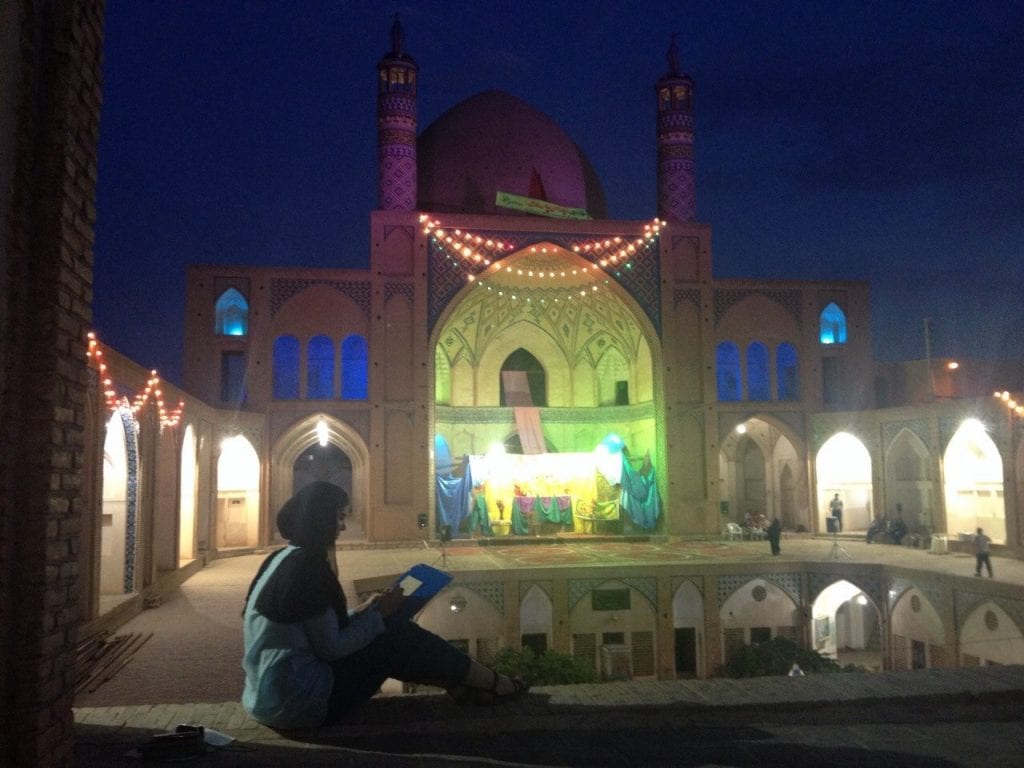April 2014 | BIPS Travel Grant
My proposed subject of study that I pitched to the British Institute of Persian Studies was borne of my interest in the monumental arts of the Qajar period. I sought to examine wall paintings and carvings so as to interrogate European attributions to these large scale Persian art forms forms. Upon receipt of BIPS funds that allowed me to conduct preliminary research on this topic by enabling first-hand exposure to the country and art objects in Iran, I found myself immersed in Zand, Afsharid, and Qajar art, architecture, and illustrative programs spanning administrative buildings and palaces in Tehran, garden pavilions and mansions in Kashan, and hammams in Yazd and Kerman. I intended this visit, my first to Iran, to be a reconnaissance trip allowing me to locate libraries, museums, and centers that would be beneficial to my future doctoral studies in Qajar arts. But as a result of this visit and perhaps due to an overexposure to remnants of 19th-century Iran, a burgeoning interest in early-modern Iranian history (16th-18th centuries) instead took root.
I organized a personal and private 10-day tour of select cities where I spent time in Ardabil, Tehran, Kashan, Shiraz, Yazd, and Kerman. Upon its completion, I was then free to visit and stay with friends and families so continued my peregrinations (at a more relaxed pace) onwards to eastern Iran, savoring Birjand, Mashhad, and Tus. The broad Khorasan region was particularly fascinating to me due to my studies at The Courtauld, where just the day before flying out to Tehran I finished my MA dissertation entitled, “Heroes of Legend, Heroes of History: Militant Manuscripts of the Shaybanid Uzbeks in Transoxiana.” In it I examined the book arts of the Shaybanid Uzbeks, long overlooked or essentialized in scholarship as the enemies to the Safavids. More neutrally, the Shaybanid Uzbeks were a Turkic and Mongol tribal confederation that occupied Transoxiana (Turan in literature and poetry) in present-day Central Asia. Khorasan was a contested zone between Safavids and Shaybanids in the 16th century. And I was able to walk around this area, now securely within the confines of Iranian national borders, on my own two feet!
It was at the museum within Ferdowsi’s tomb complex in Tus where I came across a reproduced proclamation written by the Shaybanid leader that I would like to factor into my future studies. I am intrigued by the cultural, artistic, and literary connections across the Persian ecumene with regards to the Shahnama epic, a text that straddles Iran and Turan, along with history and legend, and which has been frequently illustrated in the manuscript arts. Questions of national identity, politics, as well as articulations and assertions of self through appropriations of another’s styles and subjects in relation to the arts of Iran and Central Asia are now of key interest to me.
For a long while I had the determination and motivation to visit Iran, and was finally able to do so with the financial backing of the British Institute of Persian Studies. It is with some remorse that I confess to leaving Iran with a far different plan of study than the one I had entering Imam Khomeini Airport, but directly experiencing the country and culture has allowed me to fine-tune my interests as I progress in my academic journey. What is more, my Farsi has improved! I now know significant expressions and concepts, among them “Paykān” and “Gasht-i Irshād”! I am supremely grateful to BIPS for all it has done for me. It is an an honor to have been selected to receive the travel bursary. Mamnūn!

